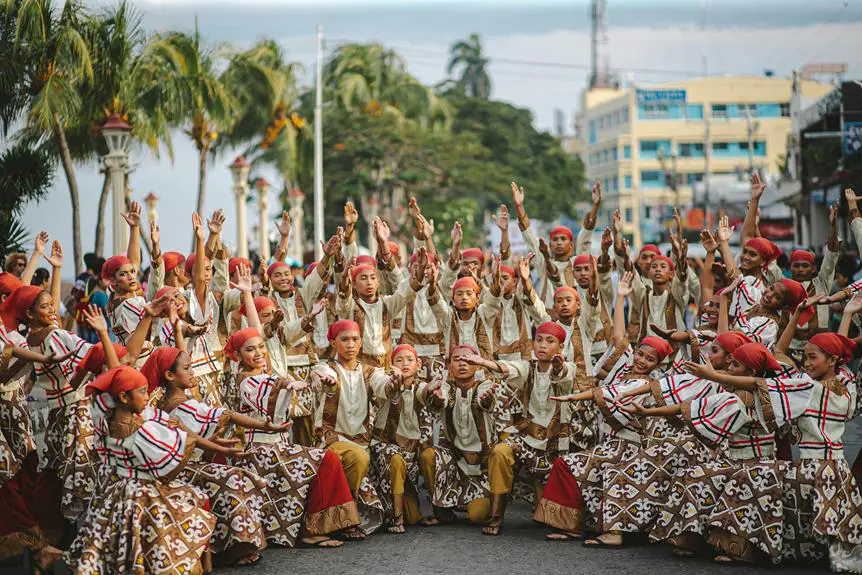You're likely no stranger to the demands of dance costumes – they need to be comfortable, flexible, and durable. Poly tricot fabric is a popular choice for many dancers, and for good reason. It offers a smooth, sleek finish and a soft, luxurious texture that's perfect for a variety of dance styles. But is it the best choice for you? While poly tricot has some clear advantages, it also has some notable drawbacks. You'll want to consider its moisture-wicking properties, movement and stretch capabilities, and care requirements before deciding if it's the right fabric for your next costume.
Table of Contents
Advantages of Poly Tricot Fabric
When choosing a fabric for dance costumes, poly tricot stands out for its unique blend of durability, comfort, and style, making it a top pick among choreographers and costume designers.
You'll appreciate its ability to withstand the rigors of repeated performances and rehearsals, as it resists wrinkles and holds its shape exceptionally well. Poly tricot is also a great choice for dancers who value comfort, as it allows for a full range of motion and breathes well, keeping you cool and dry.
You'll also love the versatility of poly tricot, as it can be dyed to match any color scheme and can be paired with a variety of embellishments, such as sequins, rhinestones, or appliques.
Additionally, poly tricot is easy to care for, as it can be machine washed and dried, making it a practical choice for busy dance companies.
Disadvantages of Poly Tricot Fabric
When you choose poly tricot fabric for your dance costumes, you'll want to consider the downsides.
You'll find that poly tricot offers limited breathability options, which can be a problem for dancers who tend to sweat a lot during performances.
Additionally, you'll notice that the fabric can fade quickly over time, which may affect the overall appearance of your costumes.
Limited Breathability Options
You'll often notice that poly tricot fabric can be prone to heat buildup and moisture retention, which significantly limits its breathability, particularly in high-energy dance performances. This can lead to discomfort and distraction for dancers, which may negatively impact their overall performance. As you consider using poly tricot for dance costumes, keep in mind its limitations in terms of breathability.
Some specific concerns to consider:
* Heat buildup: Poly tricot can trap heat, causing dancers to feel hot and sweaty, especially during intense routines.
* Moisture retention: The fabric's tendency to hold onto moisture can lead to clamminess and discomfort.
* Reduced airflow: Poly tricot's dense weave can restrict airflow, preventing moisture from evaporating quickly.
* Increased risk of overheating: Dancers may be more susceptible to overheating and dehydration due to the fabric's breathability limitations.
* Performance impact: Discomfort and distraction caused by poly tricot's breathability issues can affect a dancer's performance, potentially leading to decreased confidence and accuracy.
Fades Quickly Over Time
Poly tricot fabric's color vibrancy won't last long, as it tends to fade quickly over time, which can be particularly noticeable in costumes that are subject to frequent washing and wear. You might notice that the colors become dull and less vibrant after just a few uses. This can be a major disadvantage for dance costumes that require a lot of maintenance.
| Fabric Type | Fading Rate | Color Retention |
|---|---|---|
| Poly Tricot | High | Poor |
| Cotton | Medium | Good |
| Spandex | Low | Excellent |
As you can see from the table above, poly tricot fabric has a high fading rate and poor color retention compared to other fabrics. This means that you may need to replace your dance costumes more frequently, which can be costly. Additionally, faded colors can affect the overall appearance of the costume, making it look worn out and less appealing. If you're looking for a fabric that will maintain its color vibrancy over time, poly tricot might not be the best choice for your dance costumes.
Moisture-Wicking Properties Compared
When comparing poly tricot to other dance costume fabrics, consider its moisture-wicking properties.
You'll want to consider how breathable the fabric is in action, as well as its sweat absorption rate and dry time performance.
Breathability in Action
As dancers move across the stage, their costumes' ability to wick away moisture becomes crucial, and that's where poly tricot's breathability truly comes into play. You need a fabric that can keep up with your energetic movements and intense performances. Poly tricot's moisture-wicking properties make it an excellent choice for dance costumes.
- Quick drying: Poly tricot dries fast, ensuring you stay cool and dry throughout your performance.
- Breathability: Poly tricot allows for airflow, keeping you cool and comfortable.
* Reduced odor retention: Poly tricot's moisture-wicking properties also reduce odor retention, keeping your costume fresh for longer.
Sweat Absorption Rate
Your dance costume's ability to absorb sweat quickly is crucial to your performance, and that's why comparing the moisture-wicking properties of different fabrics is essential. Poly tricot, a popular choice for dance costumes, has a moderate sweat absorption rate. It can absorb moisture from your skin, but it may not be as effective as other fabrics like nylon or polyester. When you're dancing, you'll notice that poly tricot can take a bit longer to absorb sweat compared to these other fabrics.
However, poly tricot's moisture-wicking properties are still decent, especially when compared to cotton or linen. It can draw sweat away from your skin and release it into the air, allowing you to stay relatively dry during your performance. To give you a better idea, poly tricot's sweat absorption rate is around 30-40% compared to nylon's 50-60%. While it may not be the best, poly tricot's moisture-wicking properties are still effective enough to keep you comfortable during your dance routine.
Dry Time Performance
Poly tricot's dry time performance is a critical factor in determining how quickly it can recover from intense dance sessions, and you'll want to know how it stacks up against other popular fabrics.
When you're in the middle of a demanding routine, the last thing you want is to feel weighed down by a sweaty, clingy costume. That's why it's essential to understand how well poly tricot can wick away moisture and dry quickly.
Poly tricot compares to other fabrics in terms of dry time performance as follows:
- Polyester blends: Poly tricot's polyester content helps it dry relatively quickly, but it may not be as fast as some other synthetic blends.
- Lycra: Lycra is known for its moisture-wicking properties, but it can take longer to dry than poly tricot.
- Cotton: Cotton is a natural fiber that absorbs moisture, making it take longer to dry than poly tricot.
- Mesh: Mesh fabrics are designed for breathability and dry quickly, but may not provide the same level of comfort as poly tricot.
Movement and Stretch Analysis
When it comes to dance costumes, you'll want to consider how well poly tricot fabric moves with your body, as it's essential to analyze its stretch and recovery properties to ensure a full range of motion. Poly tricot is a type of knit fabric that has a bit of give, which is great for dance costumes that require flexibility.
You'll want to test the fabric's stretch by pulling it in different directions to see how far it will stretch and how quickly it will recover to its original shape.
You'll also want to consider how the fabric will move with your body during different dance movements. Will it cling to your legs during a jump or will it flow freely? Does it have a smooth, silky texture that will glide across your skin or will it catch and snag?
These are all important factors to consider when evaluating poly tricot for dance costumes. By analyzing the fabric's movement and stretch properties, you can determine whether it's suitable for your specific dance style and needs.
Care and Maintenance Requirements
To keep your poly tricot dance costumes looking their best, it's essential to follow specific care and maintenance requirements that cater to this fabric's unique needs.
Since poly tricot is a synthetic fabric, it requires gentle care to prevent damage and extend its lifespan. You'll want to avoid using harsh chemicals or abrasive cleaners, as they can damage the fabric's fibers.
Wash your poly tricot costumes in cold water to prevent shrinkage and color fading.
Use a mild detergent that's specifically designed for synthetic fabrics.
Avoid wringing or twisting the fabric, as this can cause stretching or distortion.
Hang your costumes to dry, rather than putting them in the dryer, to prevent heat damage.
Store your costumes in a cool, dry place to prevent moisture buildup and fabric degradation.
Alternatives to Poly Tricot Fabric
If you're looking for fabrics that offer similar benefits to poly tricot but with different characteristics, consider exploring alternatives like lycra, spandex, or velvet. These fabrics provide varying levels of stretch, drape, and texture, making them suitable for different dance styles and costume designs.
Lycra, for instance, is a popular choice for dance costumes that require a high level of stretch and flexibility. It's lightweight, breathable, and provides a smooth, sleek finish.
Spandex, on the other hand, is a versatile fabric that can be blended with other materials to create a fabric with the desired level of stretch. It's often used in costumes that require a bit of give, but also need to maintain their shape.
Velvet, with its luxurious texture and soft drape, is perfect for creating dramatic, eye-catching costumes.
When choosing an alternative to poly tricot, consider the specific needs of your dance costume. Think about the level of stretch, comfort, and durability required, and select a fabric that meets those needs.
Frequently Asked Questions
Can I Use Poly Tricot for Outdoor Dance Performances?
You're planning outdoor dance performances and wondering if poly tricot is suitable. It's essential to consider the fabric's durability and ability to withstand harsh weather conditions, such as sunlight, wind, and potential rain or snow.
Is Poly Tricot Fabric Prone to Pilling or Snagging?
You'll find that poly tricot fabric can be prone to pilling or snagging, especially with repeated wear and tear. However, it's relatively durable and can withstand moderate use without significant damage, you'll just need to handle it with care.
How Does Poly Tricot Compare to Velvet in Dance Costumes?
You're considering velvet and poly tricot for dance costumes. Velvet offers a luxurious feel and appearance, but it's often heavier and warmer. Poly tricot, on the other hand, is lightweight, breathable, and easier to move in.
Can I Dye or Print on Poly Tricot Fabric Myself?
You can definitely dye or print on poly tricot fabric yourself, but you'll need to check the care label first. Make sure to follow the manufacturer's instructions and use the right dye or ink to achieve the desired result.
Is Poly Tricot Suitable for Dance Costumes With Sequins?
You're considering adding sequins to dance costumes made from poly tricot fabric. That's a great idea! Poly tricot's smooth surface and lightweight texture make it an ideal base for sequins, which will catch the light beautifully.
- Tetron Fabric for Marine Applications: Durability and Use Cases - June 18, 2025
- Tetron Fabric for Outdoor Furniture: Weather Resistance and Care - June 18, 2025
- Tetron Fabric for Wall Coverings: Style and Application Tips - June 18, 2025







